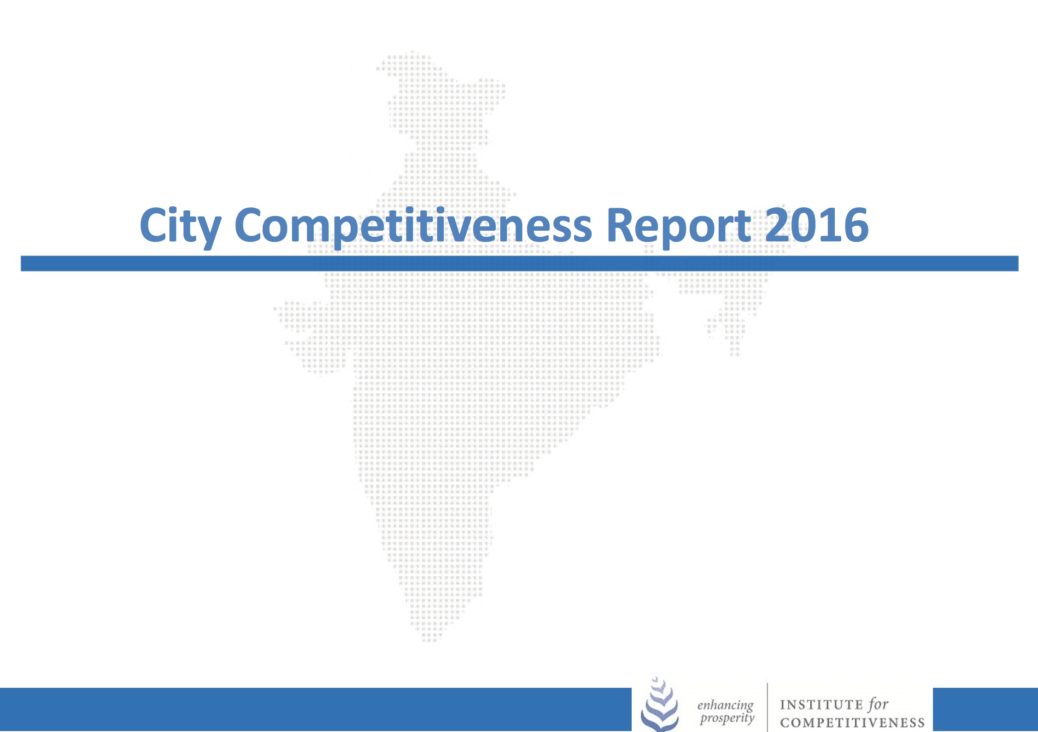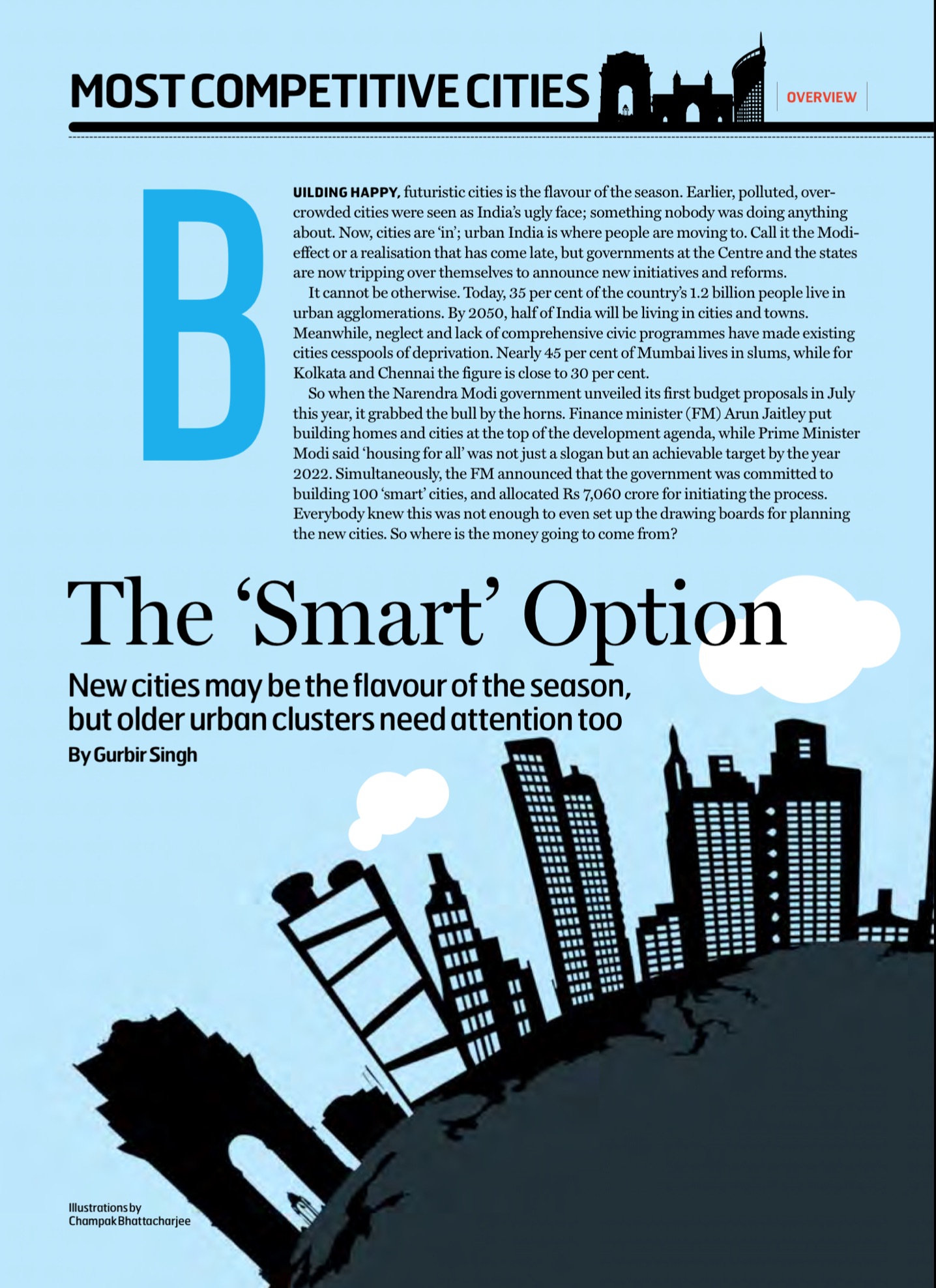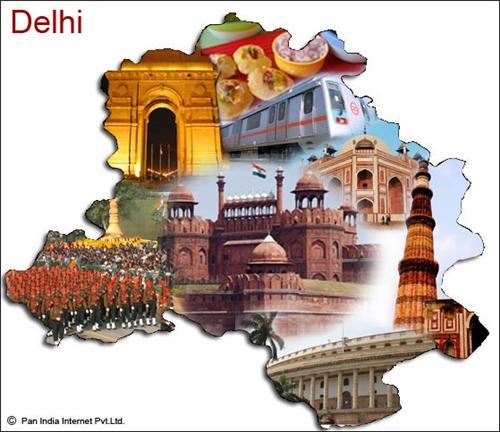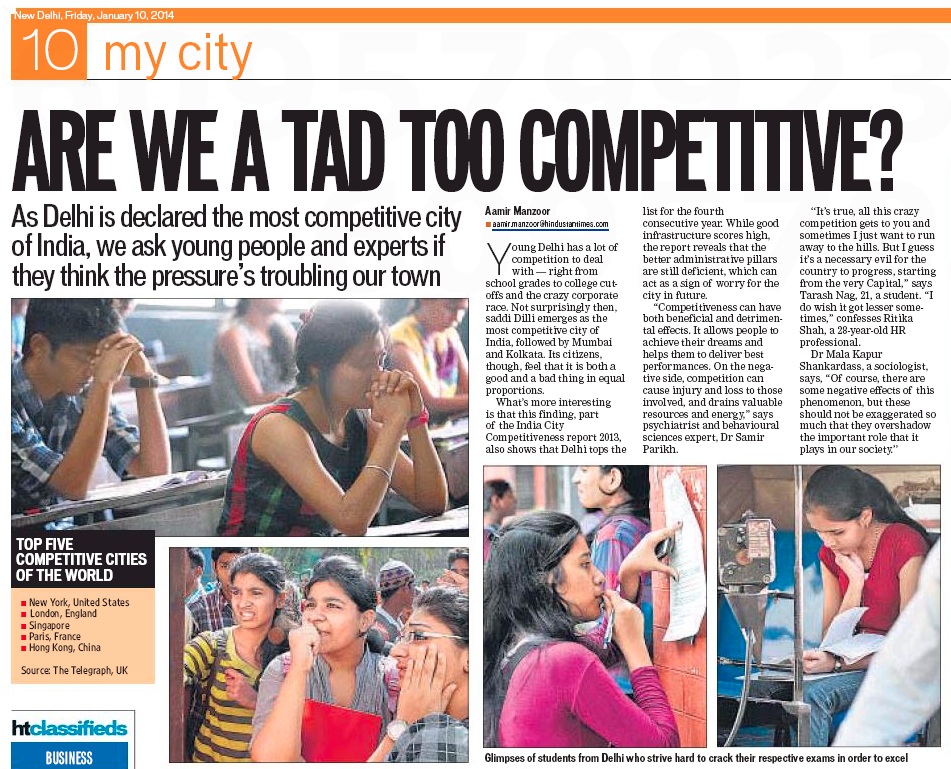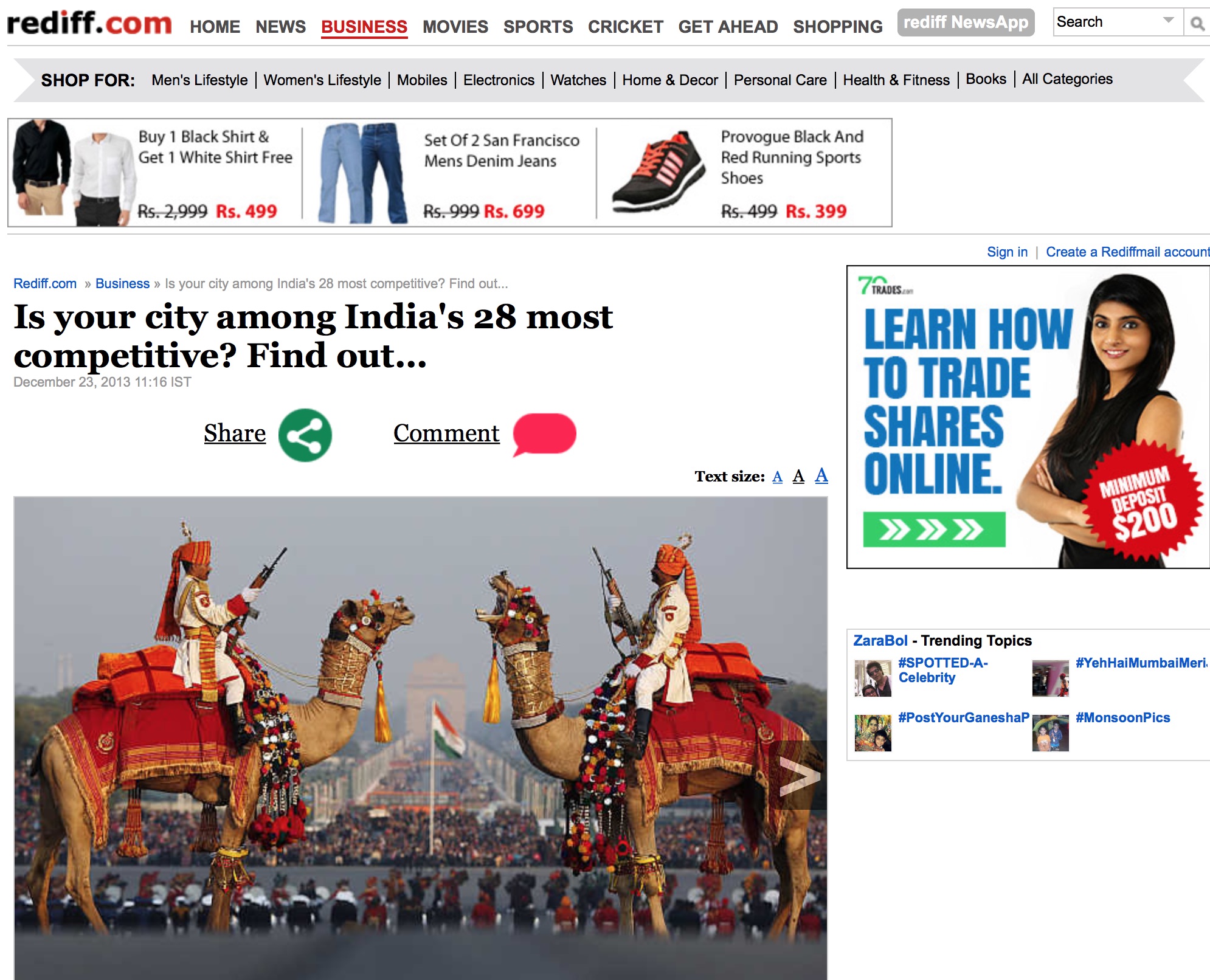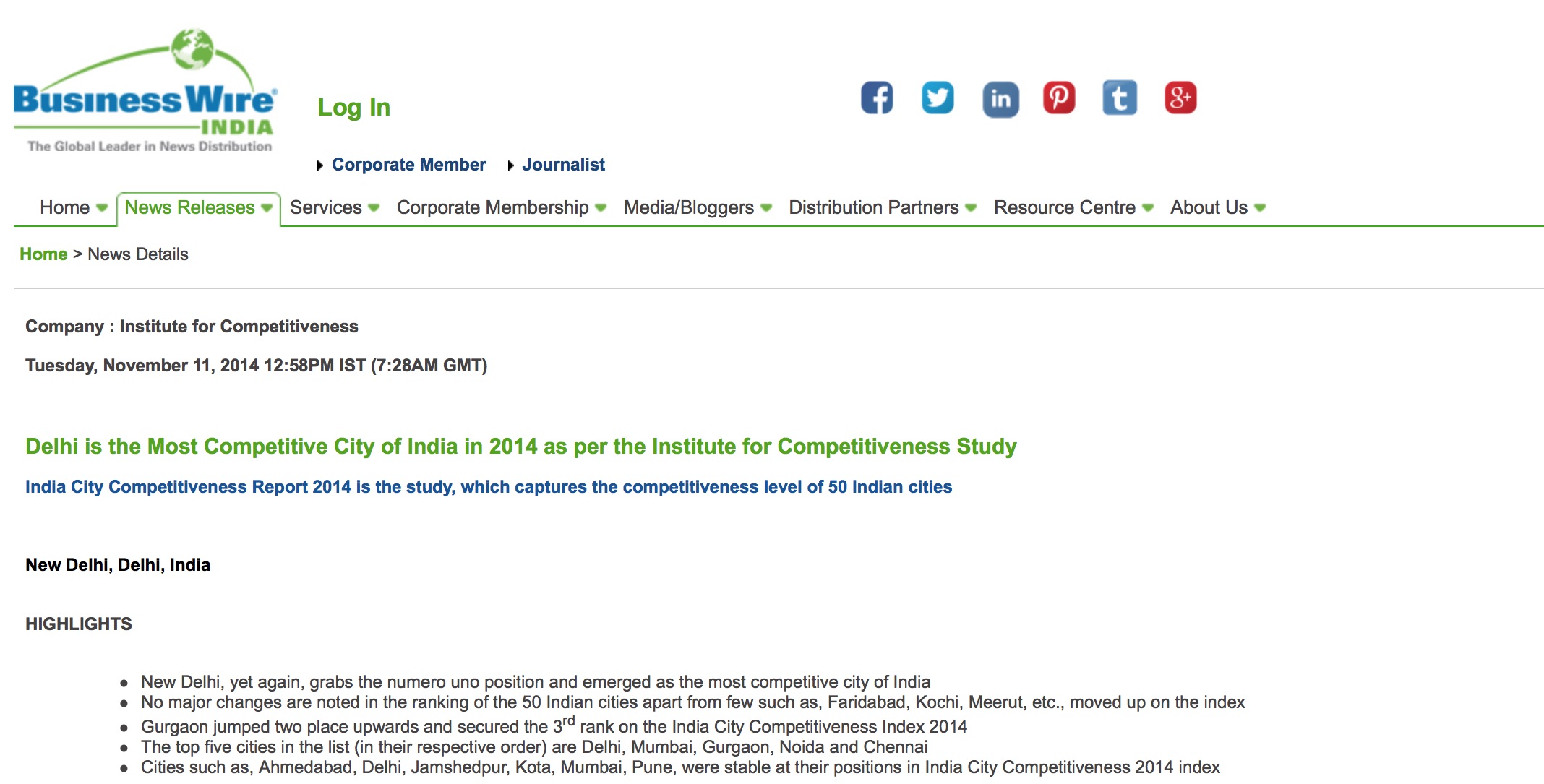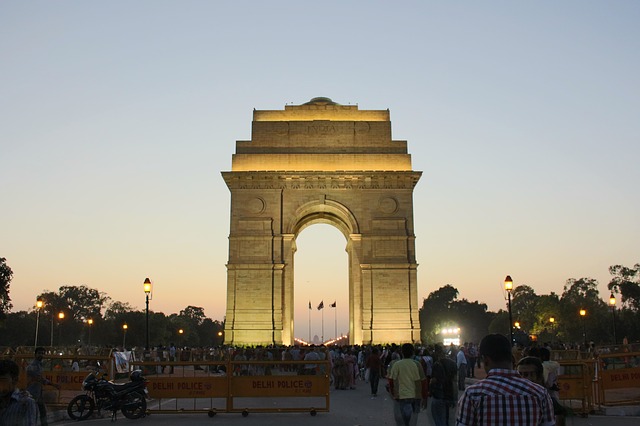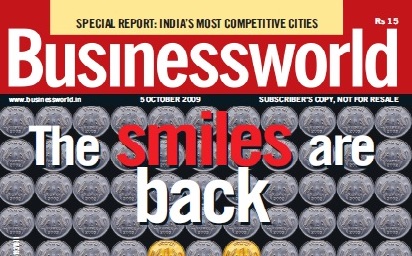The India City Competitiveness Report 2016 is a representation of the competitive performance of 50 cities of India using city-level statistics from reliable data sources. The cities are assessed on the Michael E. Porter’s Microeconomic Competitiveness Diamond Model. The model consists of four dimensions of competitiveness that are Factor Conditions, Demand Conditions, Context for Strategy and Rivalry, and Related and Supporting Industries. These dimensions are the key pillars which determine the development of a city on various components and reflect the performance of a city on the competitiveness index.
According to the City Competitiveness Index 2016, New Delhi secured the position of the most competitive city in India, sixth time in a row. It is followed by Mumbai at the second position. Gurgaon is at the third position and Chennai has improved four positions to occupy the fourth rank. Noida and Bengaluru have gone down one position each and are now ranked at fifth and sixth respectively. On the other hand, Hyderabad and Pune have both gained by one position and now are in seventh and eighth position respectively. Ahmedabad has moved down by three positions and lies at ninth place. Kolkata is stable at the tenth rank.
Kochi, Kozhikode, Thiruvananthapuram, Ludhiana and Faridabad have shown tremendous performance and moved up on the index by more than ten places as compared to their previous ranks. In contrast, cities like Indore, Raipur, Vijayawada, etc. have shown a decline in performance vis-à-vis last year. Thus, it can be inferred that non-metro cities in India should take appropriate action to improve their competitiveness level. The competitiveness index can be used to understand the present growth pattern of selected cities and chart their future strategy to meet the goals and targets. It enables benchmarking the performance of one city with another.
The report puts forth the belief that competitive advantage of a city depends on two aspects. Firstly, it relates to the firm-level capabilities. Secondly, it depends on the external factors like clusters, supporting industries, government, and macro environment conditions. Although there are national policies like tax-related policies and trade agreements but most of the real drivers of competitiveness are at local level. Hence policies at the national level having an impact at the regional scale are required. Developing clusters in a city augments the competitiveness of that city which in turn improves the competitiveness of the region or state and later-on leading to a prosperous & competitive nation. Hence, going ahead the competitiveness of cities will form the basis of competitiveness of India as a whole.

